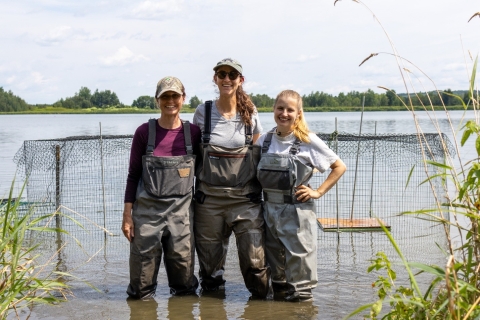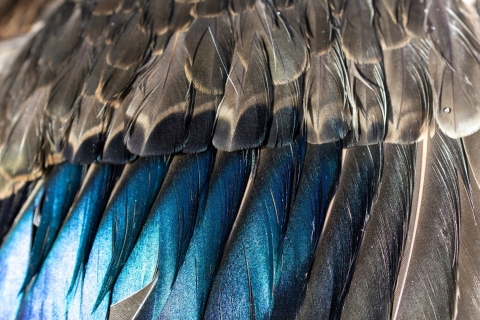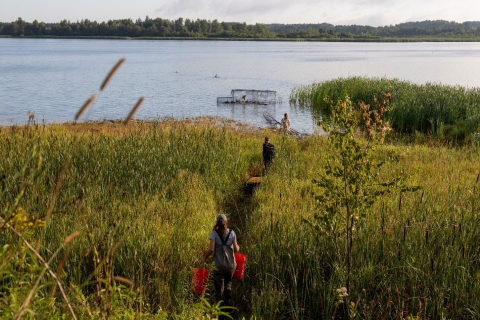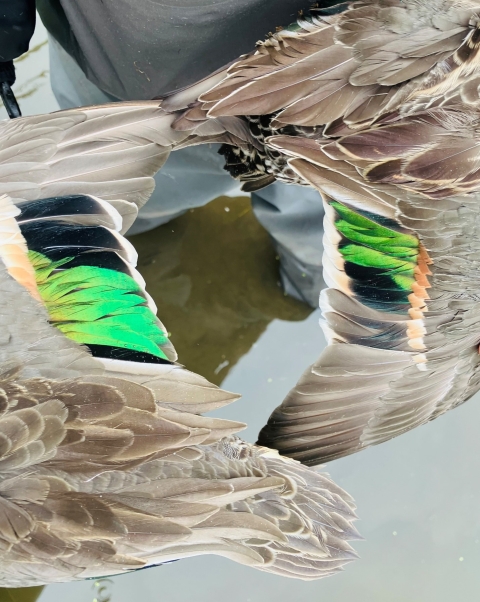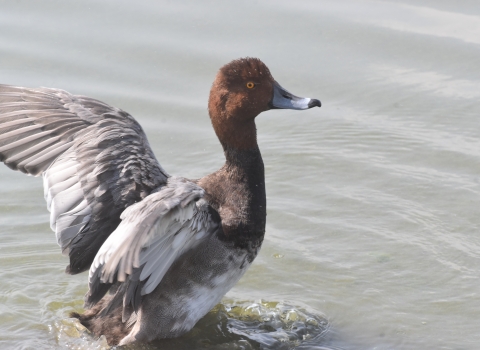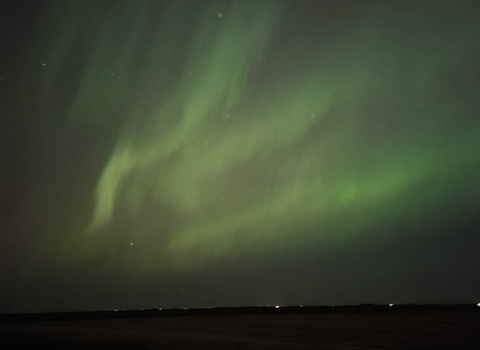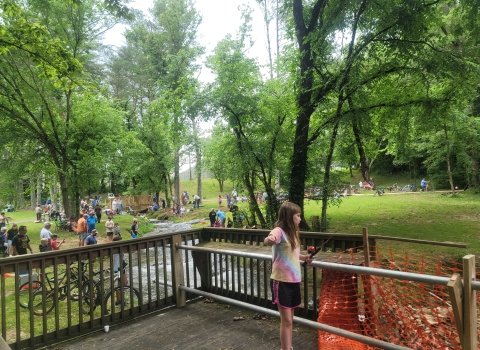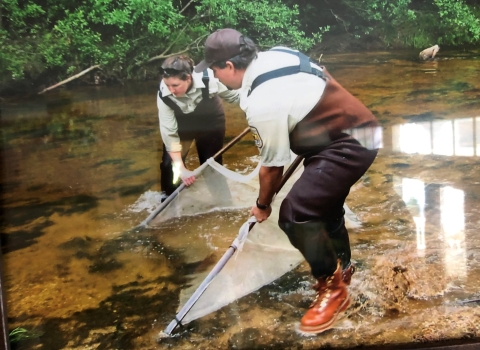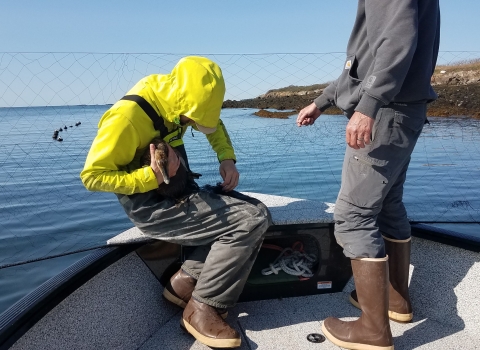This season marks this my fifth year of banding waterfowl in Maine! I've loved every season and am so grateful for the opportunity to collaborate with the Maine Department of Inland Fisheries and Wildlife in Aroostook County. Maine has always been my happy place - I was born and raised about 120 miles southwest of our banding location in a much different ecoregion of mountains, lakes, and forests. Agriculture dominates the landscape surrounding our banding sites (e.g., potato farms…think McCain French fries). However, my homeland is always within reach. With all the travel we pilot biologists do, working closer to home in August brings peace of mind knowing that while traveling away from home for a month, I'm never too far away from family if needed.
It also brings me closer to one of my favorite bird species, the American black duck (Anas rubripes). I love them! While we don't catch as many as I'd like (we’re working on that), you can always spot them in a trap crowded with mallards by their much darker plumage. It reminds me of hot chocolate or mocha as that is what springs into my head the moment I see one in the trap, and I even yell out "there's my mocha bird!" Another possible reason I love them so much is because they remind me of home sweet home.
In the northeast, black ducks prefer freshwater wooded wetlands, especially beaver-created and modified wetlands. The relationship between black ducks and beavers is well known; both are beacons of the north country. Numerous bird species benefit from beaver flowages and the wetlands they create, mainly due to the structural diversity of plant life they provide. Habitat consists of emergent vegetation (sedges and reed grasses), pondweeds, and scrub-shrub vegetation that provide cover and food during all stages of the breeding cycle. Studies have shown these wetlands have a greater abundance of invertebrates, which is another reason black ducks prefer them.
During the molt, when we are most likely to capture them, black ducks utilize a wider variety of habitats, including larger waterbodies with dense cattail margins, the mouth of rivers in James Bay, and salt marsh salt marsh
Salt marshes are found in tidal areas near the coast, where freshwater mixes with saltwater.
Learn more about salt marsh habitats in Nova Scotia.
We banded 20 lucky black ducks this year, down a bit from last year when we banded 25. They are certainly more particular and elusive than mallards! Overall, we had a great season again in Maine with a grand total of 670 birds captured! Of those, 522 were newly banded birds, including mallards (463), American green-winged teal (32), American black duck (20), A. black duck/mallard hybrids (4), ring-necked duck (2), and one wood duck.
We recaptured 137 birds banded in previous years and replaced worn bands on 11 of those recaptures. The weather was pleasant, with very few significant weather events, and temperatures were above average for much of the month. Water levels were higher, and in comparison with previous years, things seemed quiet, and waterfowl were not quite as abundant on the open waters. However, many molting birds were hiding in the cattails.


